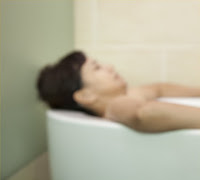Perfume Blending
By Haly JensenHof, MA, RA
http://www.yourhealthscents.com/perfume-blending/
“The scents he could create at Baldini’s were playthings compared with those he carried within him and that he intended to create one day.” Perfume by Patrick Süskind
I blend my own perfumes; however, it doesn’t come easily to me. I am a Clinical Aromatherapist who formulates and blends for an individual’s physical and emotional needs. If you need something to help with asthma, rheumatoid arthritis, stress, anxiety, or any other physical complaint or emotional need I am your woman! I also create luxurious lotions, body butters, salves, and lip balms, but perfumes are not my bailiwick.
Michel, a colleague of mine, creates the most amazing perfumes, and she has been kind enough to write the following brief description of the blending process for perfumes.
“where do I start? The best answer to that question is, start with what you like and build from there. In my experience it also takes patience, trial and error.”
If you need a little help getting started there are books that outline different blends that may inspire you. Think of it as looking for a good recipe that you can tailor to your liking. It’s a lot like making chili; you decide how much heat you want, what spices to add, and whether or not you want to add beans. Mixing essential oils for a perfume blend is essentially the same; made to your taste, mood and likes.
Perfumers will tell you there is a formula to making perfume blends, which includes top, middle and base note essential oils. I would say that these are good guidelines, with merit, but just that -guidelines. I haven’t ever been one to color inside the lines.
Here are a few helpful hints to blending your own perfume:
1. Think of what you like. Do you like earthy, spicy, or floral scents?
2. Are you looking to make a perfume that is more sensual, uplifting, soothing? Do a little research on the essential oils that have these traits and make note of them.
3. Get familiar with the scents of different oils, but don’t think too much, let you’re primal self guide you.
4. If you have an essential oil you really enjoy, build around that one.
5. Experiment with the essential oils. Start making different combinations. I also start with mixing one drop of each essential oil and letting my nose tell me which one needs a bit more. I have been known to have a number of small little vials throughout the house with various combinations of essential oils. Don’t worry if you don’t get it right the first, or fourth, time you blend, that is part of the fun!
6. Most importantly don’t over think. Listen to yourself. What is your reaction to each blend and its different scents? Let your emotions and body be your guide. Trust that your intuition will lead you to where you want to go.
7. Remember to write down what essential oils, and in what concentration, you used. You don’t want to have the perfect perfume and then not be able to remember what essential oils you used to get there.”
In blending my own perfumes I like to use a carrier oil, like Jojoba (Simmondsia chinensis), instead of alcohol, distilled water, or witch hazel. I can always smell the alcohol, which detracts from the unique signature of the essential oils.
Here is a perfume blend that I have developed:
Ethereal Mist Perfume
4 drops Rosewood (Aniba roseodora)
2 drops Australian Sandalwood (Santalum spicatum)
1 drop Vanilla (Vanilla planifolia)
2 drops Bergamot (Citrus bergamia) (NOTE - I would use Bergamot FCF. Marge)
1 drop Neroli (Citrus aurantium)
5 ml. Jojoba
Blend all essential oils in a dark glass 5 ml. bottle. Roll the blend of essential oils in your hands. Add 5 ml. Jojoba oil. The perfume blend can be used right away, but if you allow the blend to mature before use it becomes just that more Ethereal.
I hope I have inspired you to make your own signature, unique, one-of-a-kind perfume.
For more information, or if you have questions, please contact me at yourhealthscents @ gmail.com. I welcome any questions, comments or suggestions. You can also find me on Facebook at facebook.com/yourhealthscents







